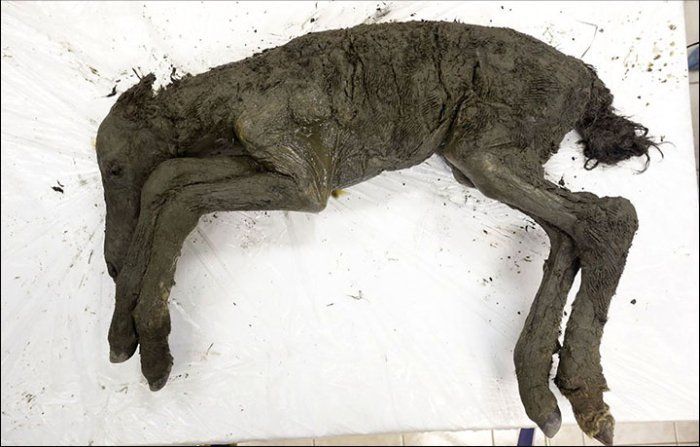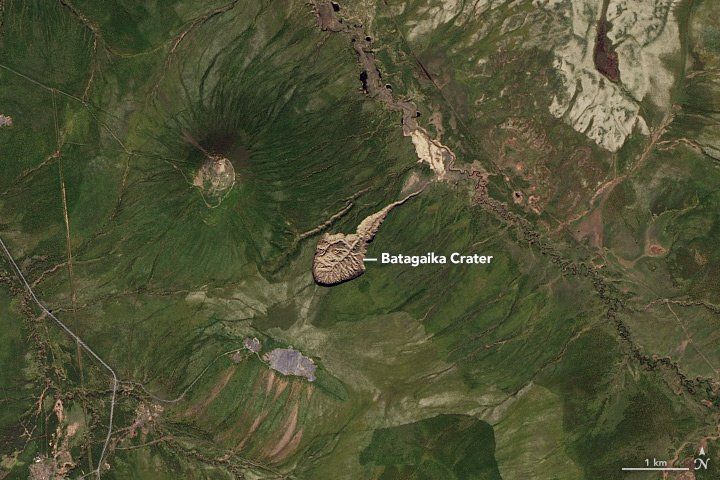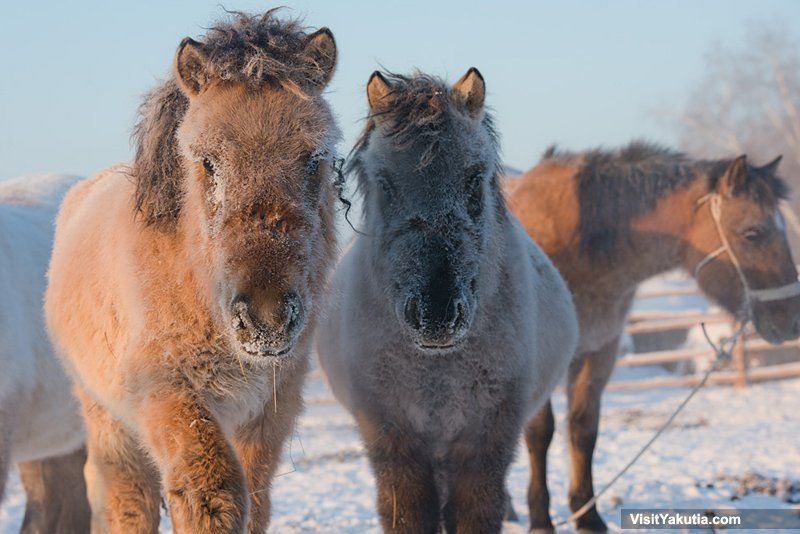You can't use up creativity. The more you use, the more you have. Maya Angelou ,,
News

Russian scientists have found the carcass of an ancient foal perfectly preserved in the Siberian permafrost. The fossil was discovered in the region of Yakutia and it still had its skin, hair, hooves and tail preserved. Yakutia is also well known because of the woolly mammoth fossils found in the permafrost. Scientists from Russia's Northeast Federal University said the foal is estimated to be 30,000 to 40,000 years old. They believe it was about two months old when it died.
The foal was found in a huge tadpole-shaped depression called the Batagaika crater located in the north-eastern Siberian taiga. It is a megaslump one kilometre long, 800 metres wide and 100 metres deep. This formation has been the result of climate change and warming temperatures triggering permafrost melting. It became noticeable in the 1960s after some taiga forest was cleared. As the depression deepened and opened up, fossil remains of mammoths, bison and a woolly rhino were revealed.

This NASA Earth Observatory image was taken by Jesse Allen using Landsat Data from the U.S. Geological Survey.
Scientists will be doing many studies on the foal including examinations of its stomach and bowel contents to see what it was eating when it died. They also took soil samples from where the fossil was found so that more studies can be done to understand the environment in which the foal lived 40,000 years ago. Curiously, there were no external injuries that could be found on the fossil and theories are that the colt might have been caught up in a natural trap and drowned, or succumbed to exhaustion.
The foal belonged to a now-extinct equine species Equus caballus lenensis
(Lena horse) that once roamed ancient Siberia. By all accounts it is genetically distinct from today's rare Yakut horse that local people value as a mount and a working horse on farms.
The story of this find is included in the second edition of HEART OF A HOOFBEAT to be released later this year.
Reducing carbon emissions is a huge priority for everyone. But sometimes that help can come from the strangest places. CBC reports in their 'What on Earth' series that horses can help keep carbon in place and slow the melt of permafrost. Permafrost covers an estimated 24 per cent of the Northern Hemisphere, has stored carbon for millions of years, but it risks releasing a lot of it as temperatures rise in the Arctic. Experiments in Siberia have shown that by increasing the number of grazing herbivores such as reindeer, bison and horses in the region their natural movement could help keep permafrost cold. Their hooves cut through the snow and ice and expose the permafrost to further freezing. By allowing grazing species adapted to Arctic cold to graze these areas they could help keep carbon in the ground and out of the atmosphere.

Photo of Yakutian horses taken by Ajar Varlamov, www.visityakutia.com
ANCIENT CAVE BEAR DNA LIVES ON IN TODAY'S BROWN BEAR
But even though the cave bear has disappeared, its DNA lives on in the genes of modern brown bears. The scientists have found that 0.9 to 2.4 per cent of living brown bears' DNA can be traced back to the ancient cave bears. Clearly they must have interbred, allowing today's brown bear to carry traces of the cave bear's gene pool. In fact brown bears and cave bears had snippets of each other's genes. Brown bears and cave bears lived side by side in the same habitat with the smaller brown bear being more carnivorous and a meat eater. So their interactions would have led to hybrid bears capable of reproducing successfully. And an open question remains as to what that snippet of DNA gave modern bears in ability or behaviour or physical qualities.
So does this mean that, just because the cave bear has gone, it has disappeared entirely? The research, published in Nature Ecology and Evolution
opens up a whole fascinating conversation on what extinction really means and whether an animal species really does live in isolation.
Copyright © All Rights Reserved.